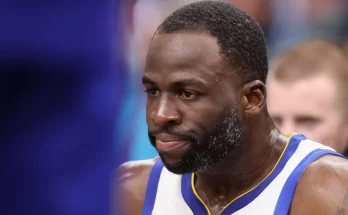Cooper Flagg Just Made SI’s 50 Most Influential People in Sports — Find Out Exactly Where He’s Ranked (And Why It Matters!)
In the ever-shifting landscape of sports, there are certain moments that transcend the usual headlines about scores, trades, and championships. One of those moments arrived with the release of Sports Illustrated’s prestigious annual list of the 50 Most Influential People in Sports, a ranking that often stirs debate, admiration, and even controversy. This year, the name that has captured the spotlight is not a seasoned veteran, billionaire owner, or media mogul, but rather a young basketball prodigy who has quickly become one of the most talked-about athletes of his generation: Cooper Flagg. The fact that Flagg, still so early in his career, has not only made the list but earned a surprisingly high placement speaks volumes about his trajectory, his cultural footprint, and the broader implications for the future of basketball and sports as a whole.
Cooper Flagg’s rise to prominence has been nothing short of meteoric. A native of Newport, Maine, his journey from small-town beginnings to national stardom has become the kind of story sports fans and media outlets can’t help but obsess over. From the moment he first burst onto the scene in high school with highlight reels that went viral across social media, Flagg demonstrated a blend of athleticism, basketball IQ, and competitiveness that immediately set him apart from his peers. Comparisons to legends came early—too early, some argued—but as time went on, Flagg consistently proved that he wasn’t just a hype creation but the real deal. By the time he committed to Duke, the basketball world was already buzzing with the possibility that he might not only be the best player of his class but a generational talent who could shift the balance of the sport itself.
That’s precisely why his inclusion on SI’s list is so significant. The publication has always been deliberate in curating the 50 Most Influential People in Sports, often blending players with executives, coaches, broadcasters, entrepreneurs, and political figures who shape the industry in both direct and indirect ways. It isn’t simply about athletic ability or career stats; it’s about reach, impact, and the power to change conversations. To see a teenager like Flagg ranked among billionaires, commissioners, and icons of other sports is a testament to how much influence he already wields. According to the latest list, Flagg landed at number 18, a placement that startled even some of his most ardent supporters. That number matters not because it’s a ranking in isolation but because it positions him above numerous household names, Olympians, and established superstars who have been shaping sports culture for over a decade. For Flagg to be placed in the upper tier of the list is nothing less than a recognition that his influence is not a matter of potential—it’s already here.
The reasons behind his ranking are layered, and they extend well beyond the court. In the modern era, influence is measured not only by performance but by cultural resonance, marketability, and the ability to galvanize a following. Flagg has checked all of those boxes with uncanny ease. On the court, he represents the archetype of the modern basketball player: versatile, dynamic, capable of guarding multiple positions, and equally comfortable scoring from deep or driving to the rim. Off the court, he has already cultivated a brand that resonates with both traditionalists and younger fans who live in the digital world of Instagram highlights and TikTok clips. His face is familiar not just to basketball insiders but to casual fans who may not yet know the names of NBA role players but instantly recognize Flagg’s name and image. Sports Illustrated clearly factored this dual influence—the hardwood dominance and the digital-age visibility—into his placement.
One of the most striking aspects of Flagg’s influence is how he has reignited conversations about college basketball at a time when many critics argue the sport has lost some of its shine to the NBA, the G-League Ignite, and overseas professional options. His decision to attend Duke, a program already steeped in tradition and media attention, instantly boosted the profile of the upcoming season. Ticket sales spiked, preseason coverage centered on him, and suddenly the narrative around college hoops had shifted back to one of excitement and anticipation. Flagg became a symbol of hope for those who feared that the college game was losing its status as a proving ground for future stars. In that sense, his influence stretches far beyond individual accolades; it directly affects the fortunes of programs, media networks, and even sponsors tied to the collegiate system.
What’s more, Flagg’s impact reflects a generational shift in how influence itself is defined. In the past, athletes typically ascended to this level of recognition after years of dominance or championship victories. Yet in today’s world, influence is as much about potential, narrative, and the power to shape conversations as it is about résumés. For younger audiences especially, Flagg embodies the idea of a new era of basketball, one where the boundaries between athlete, celebrity, and cultural figure are blurred. He’s not just seen as a player; he’s seen as a movement, a representation of what’s next. Sports Illustrated captured that sentiment by elevating him into the top 20, signaling that influence is no longer bound by age or longevity but by relevance and reach.
Of course, with recognition of this magnitude comes an equally heavy burden. Influence is both a gift and a responsibility, and many wonder how Flagg will handle the weight of such expectations. History is filled with prodigies who faltered under the spotlight or struggled to live up to the hype that was placed upon them. Yet what makes Flagg stand out, according to many coaches and insiders, is his mental approach to the game and life. He’s been described as fiercely competitive yet grounded, ambitious but humble enough to understand the bigger picture. That mindset may be his greatest asset as he navigates the challenges of being not just a player but a public figure expected to carry the hopes of fans, programs, and even brands.
The marketing implications of Flagg’s rise also cannot be ignored. Brands have already started circling, eager to align with a figure who appears destined to be the face of basketball’s next era. Endorsement deals, NIL opportunities, and potential partnerships position him not only as an athlete but as a cultural ambassador who can move products, shift demographics, and reshape how young fans engage with the sport. His presence on SI’s list validates his commercial power just as much as his athletic dominance, sending a signal to companies that Flagg is already in the same conversation as athletes with far more experience and accolades.
It’s also important to consider the symbolic weight of Flagg’s placement on the list. For a kid from Maine—a state not exactly known as a basketball hotbed—to reach such heights, it represents the democratization of talent in the modern sports era. No longer are athletes required to come from traditional power centers or well-established pipelines to make an impact. Social media, scouting, and the globalization of sports have created pathways for talent to be recognized regardless of geography, and Flagg’s ascent embodies that reality. His story has become a beacon for countless young athletes in small towns across America and beyond, proving that influence and opportunity are no longer bound by zip code.
Why does it matter that Flagg is number 18 on SI’s 50 Most Influential People in Sports list? It matters because lists like these aren’t just rankings; they’re cultural barometers. They reflect not only who holds power in sports today but who will shape it tomorrow. By elevating Flagg to this echelon, SI is essentially declaring him a figure who transcends the boundaries of his sport and sits at the forefront of broader cultural conversations. It matters because it validates the idea that influence is not about waiting one’s turn but about seizing the moment. And it matters because it positions Flagg as not just an athlete to watch but as a figure to study, emulate, and debate in the years ahead.
As the season unfolds, every move Flagg makes will be scrutinized through the lens of his newfound recognition. Each game, interview, and appearance will feed into the narrative of whether he can live up to the lofty billing bestowed upon him. But regardless of how the future plays out, his presence on SI’s list has already cemented his place in sports history. He has gone from being a highly touted prospect to one of the most influential people in the industry, a transition that usually takes years but has, in his case, been compressed into a remarkably short timeframe.
In the end, Cooper Flagg’s inclusion—and high ranking—on the 50 Most Influential People in Sports is more than just a personal accolade. It’s a reflection of where sports culture stands today and where it’s headed tomorrow. It’s a recognition of the shifting dynamics of influence, the growing power of young athletes, and the blurring lines between talent, brand, and narrative. It’s a story about possibility, responsibility, and the way a single individual can capture the imagination of an entire industry. For Flagg, number 18 is not the culmination of a journey but the beginning of one, a reminder that influence is both a crown and a challenge. And for fans, media, and the sports world at large, it’s an invitation to witness the rise of a new era—one led, fittingly, by a young man from Maine whose name now sits alongside the giants of sports and culture.



